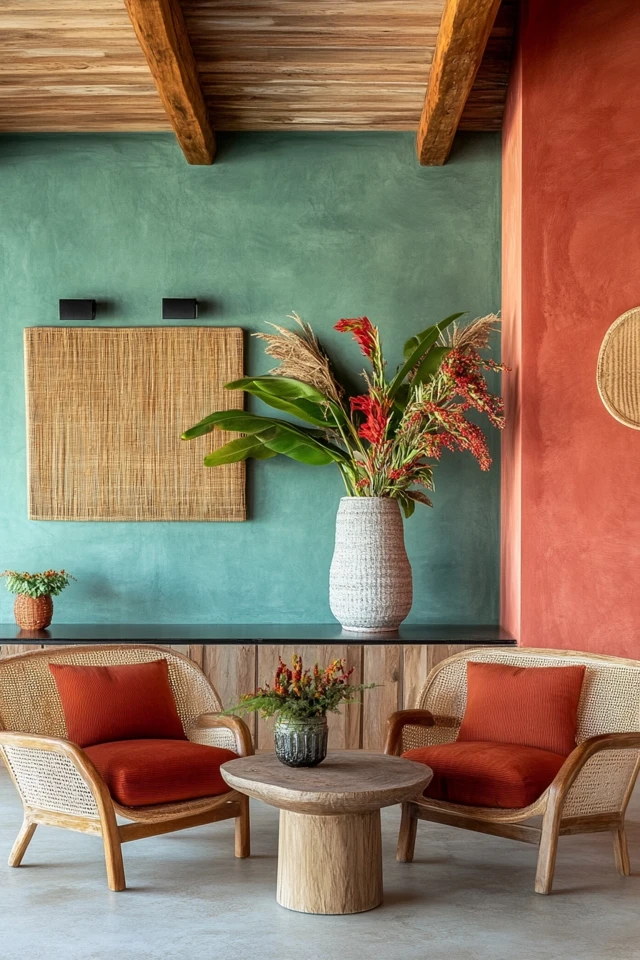Imagine stepping into your home and feeling an instant wave of calm, like you’ve been transported to a breezy beachfront retreat. That’s the magic of the coastal vibe—a design style that celebrates light, airiness, and the soothing essence of the sea. The coastal look isn’t about filling your space with seashells and anchors; it’s about capturing the feeling of serenity and the natural beauty of the coast.
When I first brought coastal design into my home, I learned how small tweaks, like introducing a soft palette and natural materials, could make such a big impact. One summer, after a visit to a quaint seaside cottage, I felt inspired to recreate that tranquil atmosphere. I swapped heavy curtains for sheer ones, added a jute rug, and incorporated soft blues and whites throughout. It was transformative—my space felt lighter, fresher, and more inviting.
Here’s how you can achieve the perfect coastal vibe in your home, whether you live by the ocean or simply want to bring a little bit of the beach indoors.
1. Embrace a Light and Airy Color Palette
Why It Works
The coastal vibe thrives on a soft, natural color palette that reflects the sand, sea, and sky.
How to Do It
- Stick to whites, beiges, and soft grays as your base colors.
- Incorporate ocean-inspired hues like seafoam green, turquoise, or soft navy.
- Use sandy tones, driftwood grays, or warm browns to ground the palette.
Styling Tip:
Paint your walls in a crisp white or a pale blue, then use throw pillows and rugs to layer in color.
2. Incorporate Natural Textures
Why It Works
Natural materials like jute, rattan, and linen mimic the organic textures of the coast.
How to Do It
- Add a jute or sisal rug to your living room or entryway.
- Use rattan furniture or accents like woven baskets.
- Layer lightweight linen curtains or throws to keep the look breezy.
Example:
A light-colored sofa with a jute rug and rattan armchair creates a cozy, beach-inspired seating area.
Picture Gallery

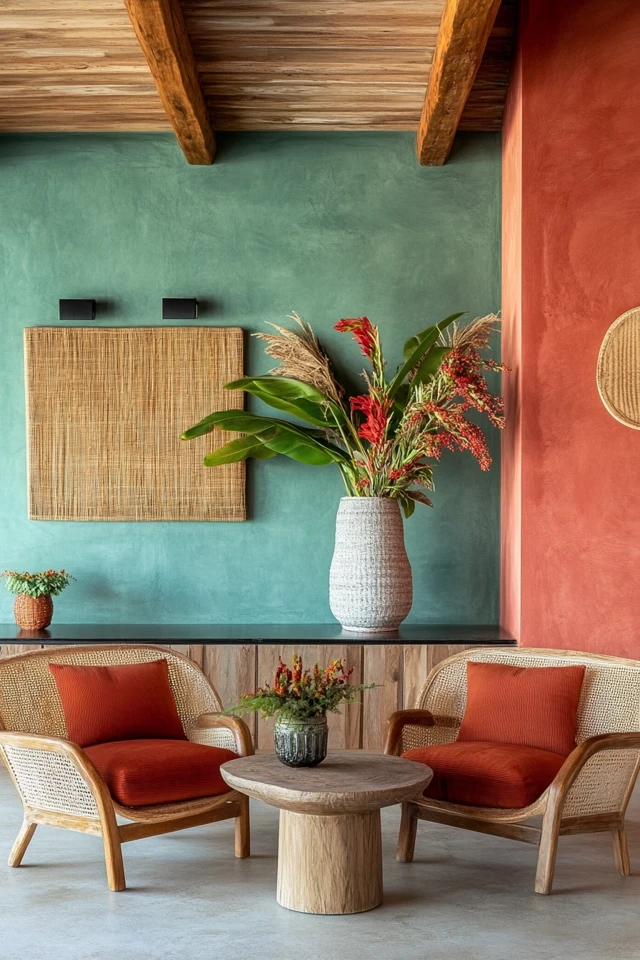
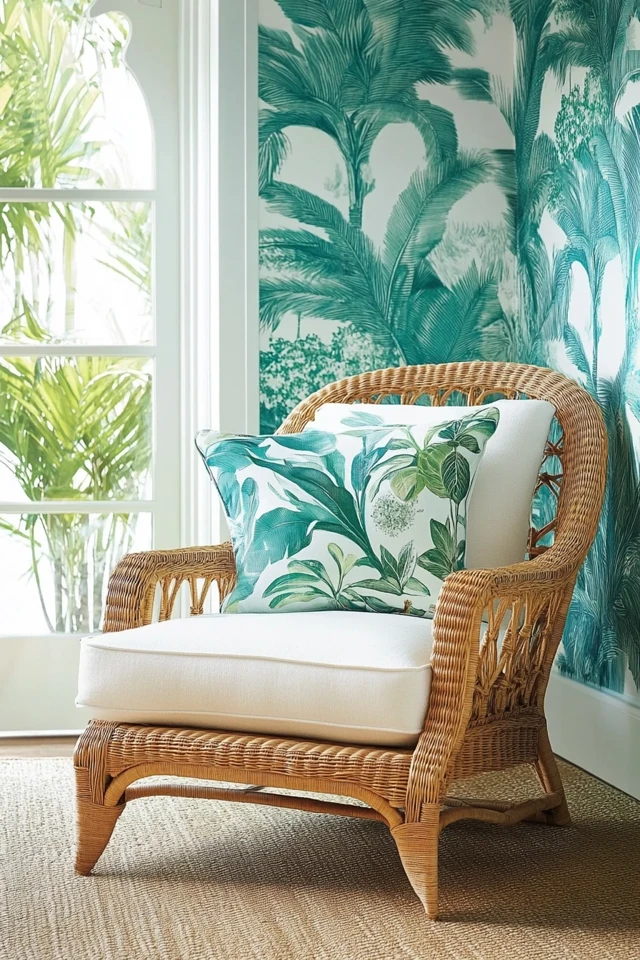
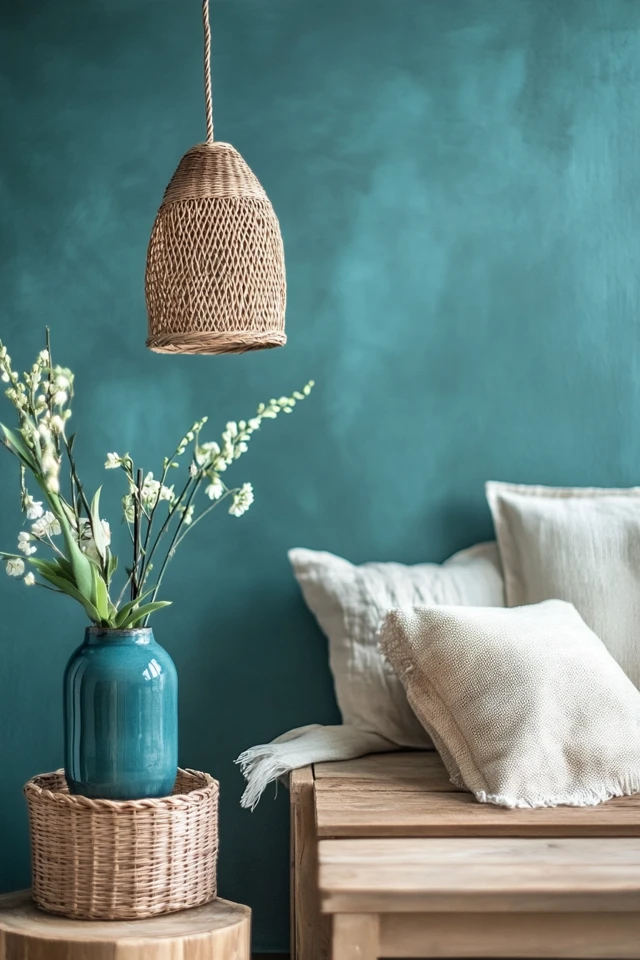
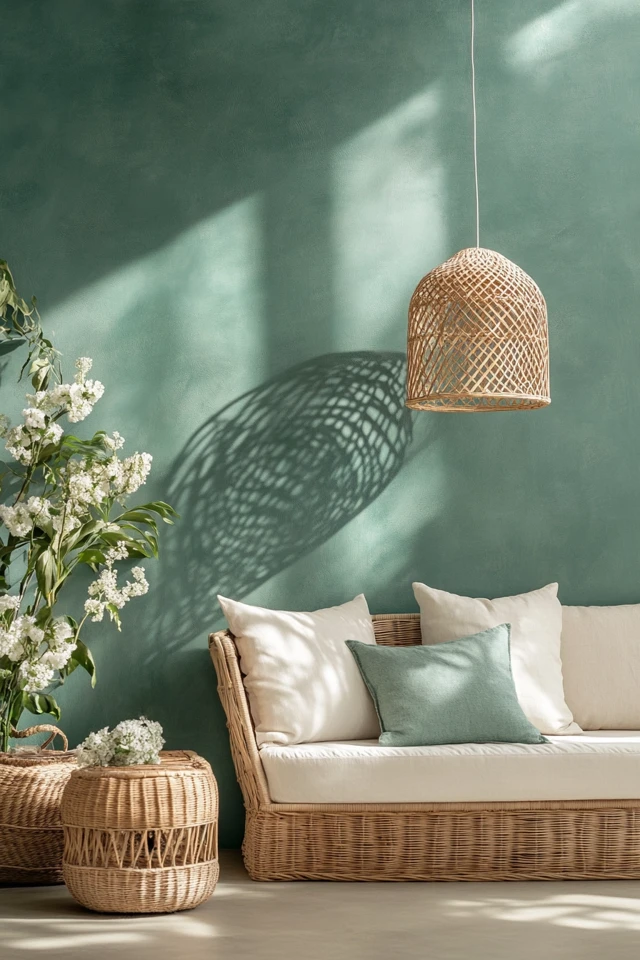
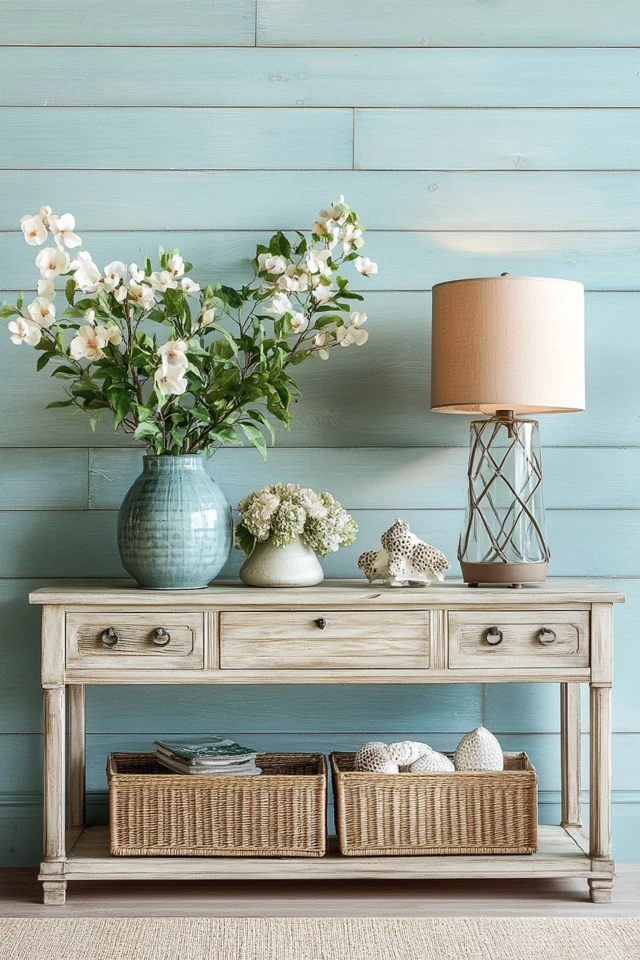

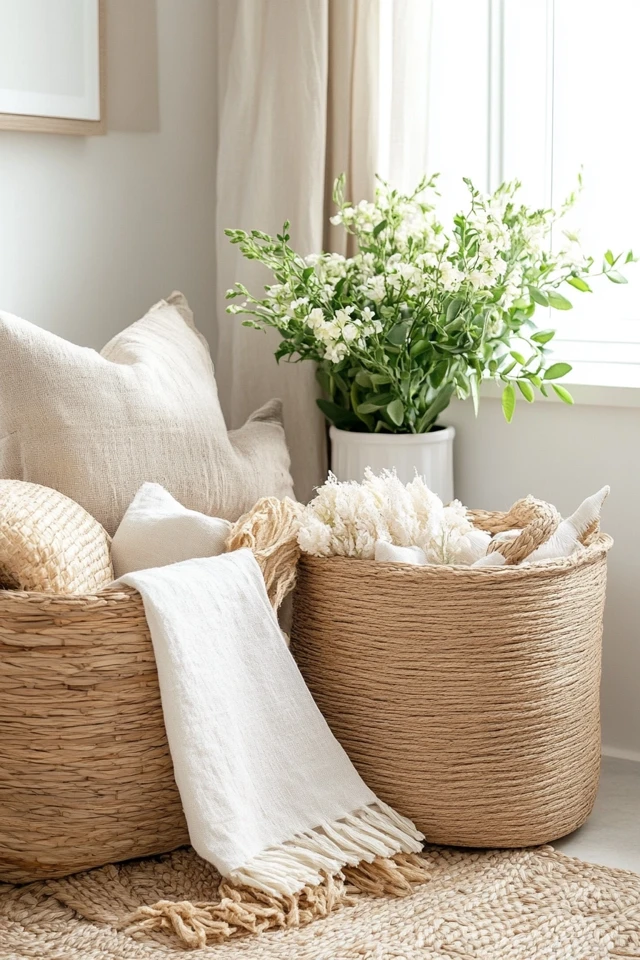
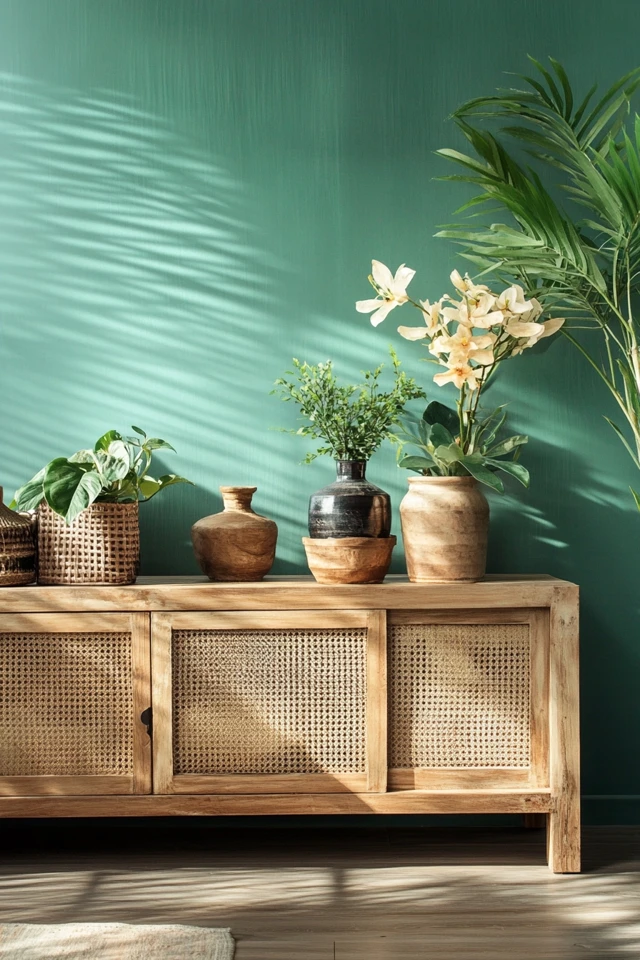
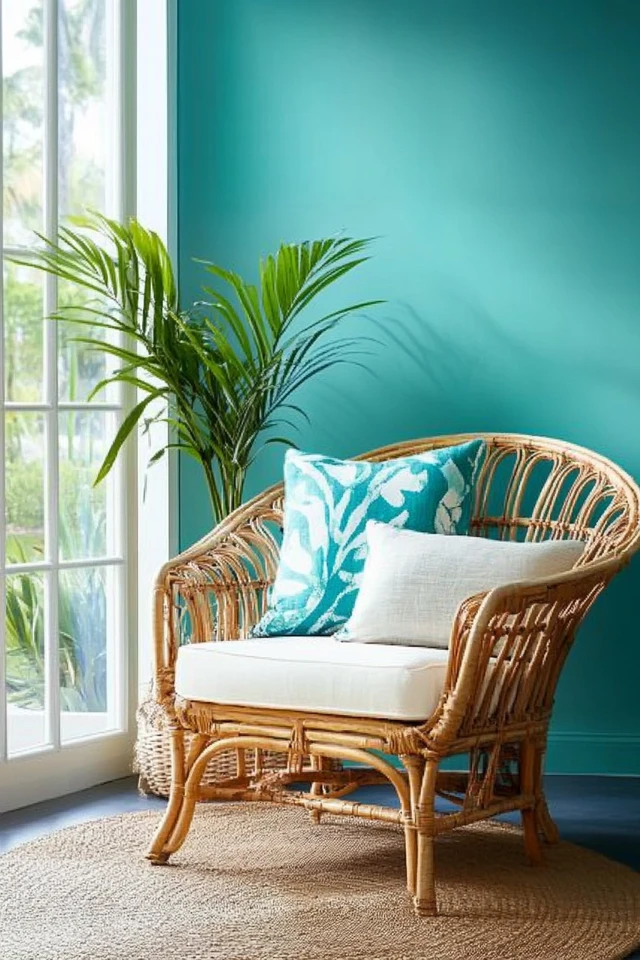
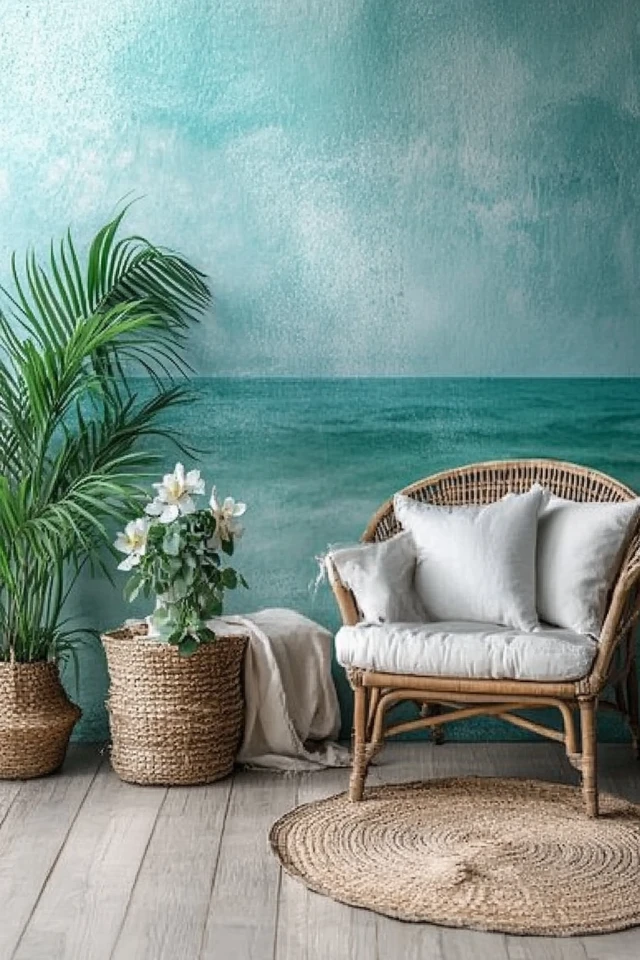
3. Let in the Light
Why It Works
Coastal homes are known for their abundance of natural light, which keeps spaces feeling open and fresh.
How to Do It
- Swap heavy drapes for sheer curtains to let sunlight filter in.
- Use mirrors to reflect light and brighten the space.
- Keep window treatments simple and neutral for a clean look.
Styling Tip:
Position a large mirror opposite a window to amplify natural light in the room.
4. Add Subtle Nautical Touches
Why It Works
Nautical-inspired decor can enhance the coastal vibe without feeling cliché.
How to Do It
- Choose navy and white stripes for throw pillows or rugs.
- Use decorative items like lanterns, rope accents, or vintage maps.
- Incorporate art with subtle nautical themes, such as seascapes or abstract water designs.
Example:
A white sofa with navy-striped pillows and a framed watercolor print of the ocean strikes the perfect balance.
5. Use Coastal-Inspired Art and Decor
Why It Works
Artwork and decor inspired by the sea add personality and reinforce the theme.
How to Do It
- Hang prints of ocean landscapes, coral, or beach scenes.
- Display decor items like driftwood sculptures, glass vases, or shells (in moderation).
- Create a gallery wall that mixes coastal photography and abstract art.
Styling Tip:
A collection of glass vases in varying shades of blue on a shelf can evoke the colors of the sea.
6. Choose Comfortable, Casual Furniture
Why It Works
Coastal homes are relaxed and inviting, so your furniture should feel cozy and approachable.
How to Do It
- Opt for slipcovered sofas in white or neutral tones.
- Use oversized armchairs or benches with plush cushions.
- Select weathered wood finishes for tables and storage pieces.
Example:
A white slipcovered sofa with a distressed wood coffee table feels effortlessly coastal.
7. Add Greenery for a Fresh Touch
Why It Works
Plants bring life and vibrancy to any room, enhancing the natural, organic feel of coastal design.
How to Do It
- Use potted plants like ferns, palms, or fiddle-leaf figs for a tropical touch.
- Place small succulents or air plants on shelves or tables.
- Incorporate fresh or dried flowers in simple glass vases.
Styling Tip:
A tall palm in the corner of the room instantly adds a coastal vibe and fills empty space.
8. Layer Cozy Textiles
Why It Works
Soft, layered textiles add warmth and comfort while maintaining the light, airy aesthetic.
How to Do It
- Layer linen or cotton blankets on sofas and beds.
- Use lightweight throws in coastal colors like blue, white, or beige.
- Incorporate textured cushions, such as knits or fringed designs.
Example:
A bed layered with crisp white sheets, a blue knit throw, and patterned pillows feels cozy yet beachy.
9. Bring in Coastal Flooring
Why It Works
Natural or light-colored flooring enhances the bright, open feel of a coastal home.
How to Do It
- Use light wood or whitewashed floors for a classic look.
- Add a jute or seagrass rug for warmth and texture.
- Choose tiles in soft blues or grays for bathrooms and kitchens.
Example:
A light oak floor with a jute runner instantly evokes a seaside cottage feel.
10. Style with Glass and Ceramics
Why It Works
Glass and ceramics reflect light and echo the colors of the ocean.
How to Do It
- Use glass vases or jars filled with sand, shells, or candles.
- Display ceramic bowls or dishes in soft blues and greens.
- Incorporate a glass coffee table for an open, airy look.
Styling Tip:
A grouping of glass bottles in varying shapes and ocean hues on a mantel adds a refined coastal touch.
How to Maintain the Coastal Vibe
- Keep It Minimal: Avoid overloading the space with decor—coastal design thrives on simplicity.
- Clean Regularly: Keep white furniture and light fabrics fresh and stain-free with regular upkeep.
- Refresh Accessories: Swap out pillows or throws seasonally to keep the space feeling updated.
- Incorporate Natural Scents: Use diffusers with ocean-inspired scents like sea salt, eucalyptus, or citrus to enhance the ambiance.
- Declutter Often: Coastal spaces should feel open and uncluttered, so regularly edit your decor and furniture.
Conclusion
Achieving the perfect coastal vibe in your home is about creating a light, airy, and calming space that feels connected to the natural beauty of the seaside. From a soothing color palette to natural textures and subtle nautical touches, every element works together to evoke that breezy, beach-inspired feel.
When I introduced these elements into my own home, the transformation was incredible. The space felt more open, inviting, and serene—a place I looked forward to retreating to at the end of the day.
Now it’s your turn! Use these tips to bring the magic of the coast into your own home, whether you live by the beach or simply want to embrace its tranquil charm.
FAQ
Can coastal design work in homes that aren’t near the beach?
Absolutely! Coastal design is about evoking a feeling, not geography. With the right colors, textures, and decor, you can create a beach-inspired vibe anywhere.
What are the key colors in coastal design?
Soft whites, blues, sandy beiges, and driftwood grays are the foundation of a coastal palette.
How do I avoid a coastal room looking too theme-heavy?
Focus on subtle details, like natural materials and ocean-inspired hues, rather than overtly nautical items like anchors or seashells.
What are the best materials for a coastal home?
Linen, rattan, jute, driftwood, and glass are all excellent materials that reflect the natural, organic feel of the coast.
How can I make my coastal design feel more modern?
Incorporate clean lines, minimalistic furniture, and abstract coastal art for a modern take on the traditional coastal vibe.

